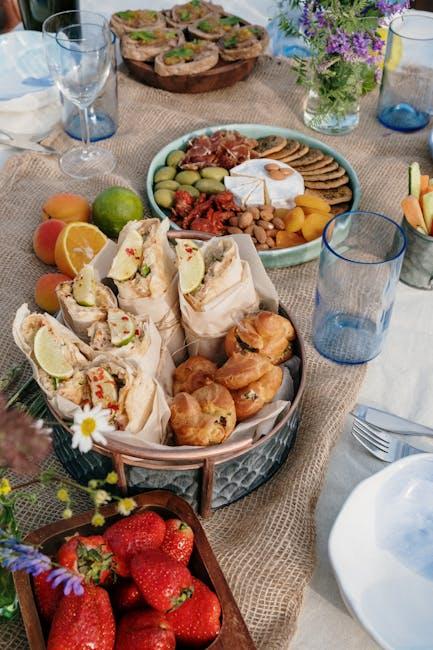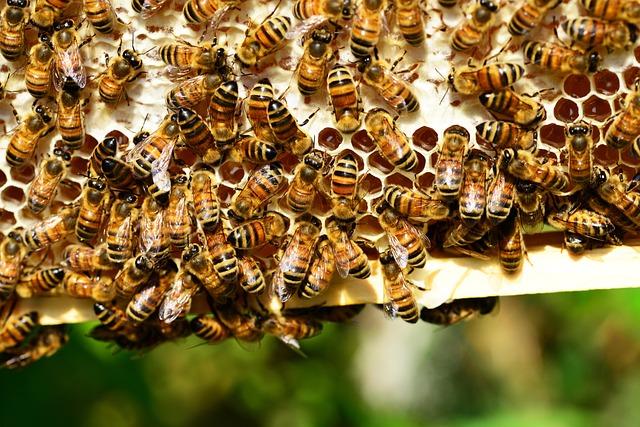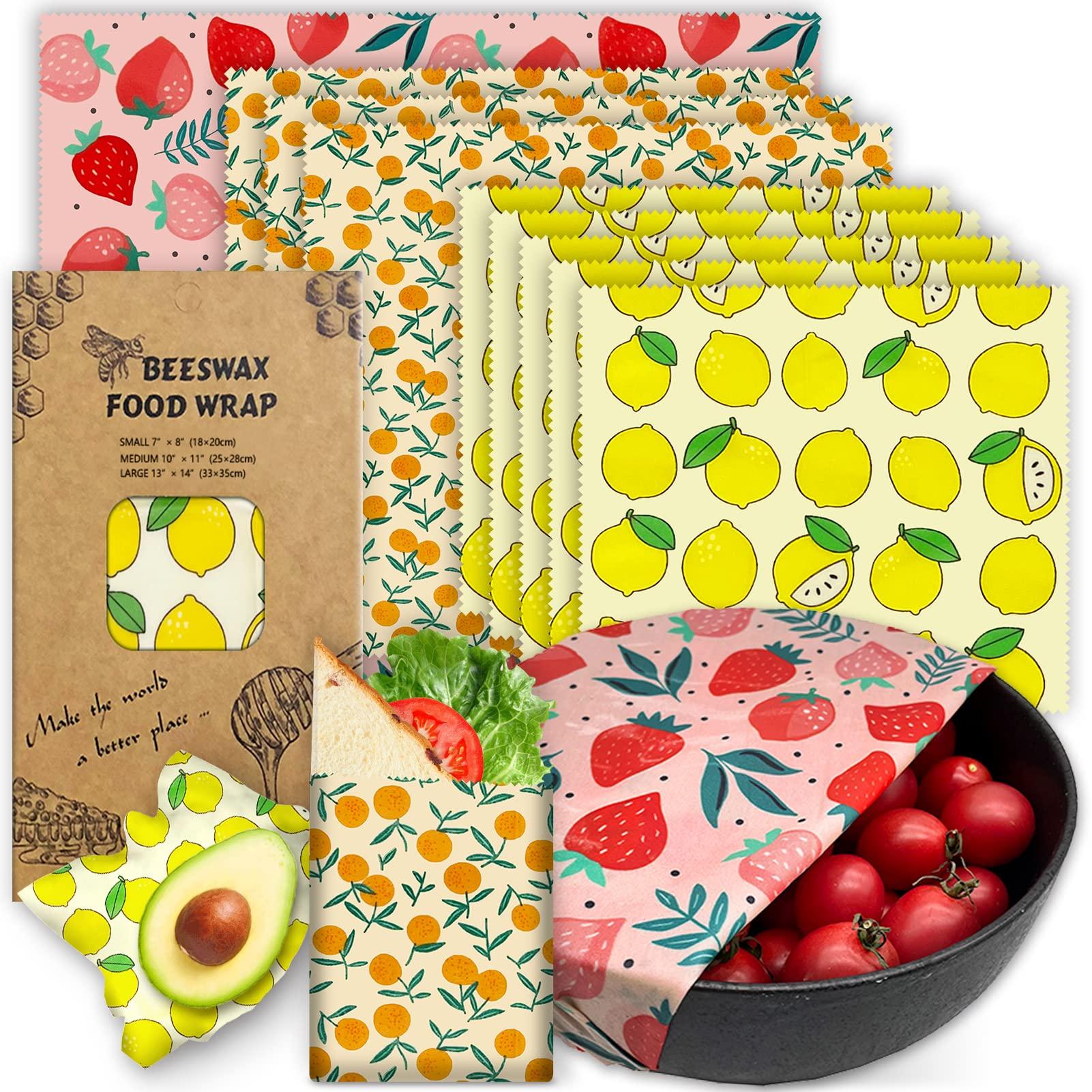In a world increasingly aware of the environmental impact of our daily choices, the quest for sustainable alternatives has never been more pressing. One such innovation that has buzzed onto the scene is beeswax food wraps — a charming blend of nature and practicality designed to replace single-use plastics in our kitchens. Fashioned from organic cotton, infused with beeswax, tree resin, and jojoba oil, these wraps not only serve as an eco-kind solution for preserving our food but also offer a delightful aesthetic that elevates the humble act of storage.As we navigate the complexities of reducing plastic waste, it’s worth exploring whether beeswax food wraps truly stand up as a viable contender in the battle against plastic. In this article, we’ll delve into the benefits, usage, and potential drawbacks of this beeswax wonder, helping you decide if it deserves a place in your home.
Exploring the Eco-Friendly Benefits of Beeswax Food Wraps
As the world becomes increasingly aware of the need for sustainable practices,beeswax food wraps are making waves as a fantastic alternative to single-use plastics.These wraps, made from organic cotton infused with natural beeswax, resin, and jojoba oil, provide an eco-friendly solution for food storage. This biodegradable option not only reduces plastic waste but supports local beekeepers and sustainable agriculture. By choosing beeswax wraps, consumers can experience a guilt-free way to keep their food fresh without contributing to the pollution associated with plastic products.
The benefits extend beyond environmental impact; beeswax food wraps also offer practical advantages for everyday life. Thay are reusable, easy to clean, and naturally antibacterial, helping to maintain food hygiene. Whether you’re wrapping sandwiches, covering bowls, or storing fruits and vegetables, these wraps adapt to various shapes and sizes. Here are some key benefits:
- Durability: Can be reused for up to a year, making them a long-lasting option.
- Breathability: Allows food to breathe while keeping it fresh,reducing spoilage.
- Convenience: Easily washable with cold water and mild soap, so they’re simple to maintain.
- Versatility: Available in various sizes and patterns, catering to various storage needs.

Understanding How Beeswax Wraps Compare to Traditional Plastics
Beeswax wraps are making waves as a sustainable alternative to traditional plastic food storage methods. Unlike plastic wraps which contribute to the growing pollution crisis, beeswax wraps are biodegradable and composed of natural materials, including cotton fabric coated with a blend of beeswax, jojoba oil, and tree resin. This unique composition allows beeswax wraps to be both flexible and breathable, giving food the ability to stay fresh longer without the suffocation often caused by plastic. Additionally, the process of creating beeswax wraps is significantly more environmentally friendly, utilizing renewable resources and reducing dependence on single-use plastics.
When comparing the effectiveness and usability of beeswax wraps versus plastic, several factors come into play:
- Durability: Beeswax wraps can last up to a year if properly cared for, whereas plastic wraps can only be used once.
- Reusability: Beeswax wraps can be washed and reused, minimizing waste and providing a cost-effective solution over time.
- Food Preservation: While beeswax wraps offer a breathable seal that helps prevent mold, plastics are often airtight, which can lead to quicker spoilage.
The following table summarizes key differences between the two options:
| Feature | Beeswax Wraps | Plastic Wraps |
|---|---|---|
| Composition | natural materials | Petroleum-based |
| Biodegradability | Yes | No |
| Longevity | Up to 1 year | Single use |
| Breathability | yes | No |

Caring for Your Beeswax Wraps: Tips for Longevity and Efficiency
To ensure the longevity and efficiency of your beeswax wraps, proper care is essential. Start by gently washing your wraps with cool water and a mild dish soap after each use.Avoid hot water and aggressive scrubbing, as these can damage the beeswax coating. For stubborn residues, a soft sponge can be used, but refrain from using anything abrasive. After washing, simply hang your wraps to air dry; this will help maintain their stickiness and pliability. Store them in a cool, dry place away from direct sunlight, as prolonged heat can reduce their lifespan.
It’s also helpful to follow these tips for optimal usage:
- Avoid raw meat: Beeswax wraps are best for fruits, vegetables, bread, and cheese.
- Reapply wax: after several uses, if the stickiness lessens, consider reapplying beeswax & resin to refresh your wraps.
- Keep away from direct heat: Do not use wraps in the oven or microwave as high temperatures can melt the beeswax.
| Use | Recommended Time |
|---|---|
| Cool wash | Promptly after use |
| Air Dry | 1-2 hours |
| Storage | Cool,dry place |

Creative Uses for Beeswax Food Wraps in Everyday Life
Beeswax food wraps are not just a sustainable alternative to plastic; they can also be surprisingly versatile in your daily routine. As an example, instead of reaching for disposable plastic bags for smaller items, consider using beeswax wraps to store snacks like nuts or sliced fruits. They can mold to any shape and seal tightly,keeping your snacks fresh and easy to transport. Additionally,these wraps work wonders for covering bowls of leftovers or half-cut vegetables,preventing spills while maintaining moisture without the use of cling film.
Beyond food storage, beeswax wraps can serve as unique crafting materials. here are some creative ideas:
- Gift Wrapping: Use wraps to create eco-friendly gift packaging for small items like chocolates or handmade soaps.
- Art Projects: Incorporate beeswax wraps into art creations, adding texture and a pop of color.
- DIY Coasters: Cut wraps into various shapes and sizes to create colorful coasters that are both functional and lovely.
In Summary
As we wrap up our exploration of beeswax food wraps, it’s clear that these sustainable alternatives to plastic carry both charm and duty. Embracing beeswax wraps not only promotes a greener kitchen but also encourages mindful consumption and a reconnection with the food we cherish. While they may not be a silver bullet in the fight against plastic pollution, they embody a step towards a more eco-conscious lifestyle—one snack at a time. As you consider integrating these wraps into your daily routine,remember that every choice matters in the grand tapestry of sustainability. Will you join the buzz and help the planet, one wrap at a time?

